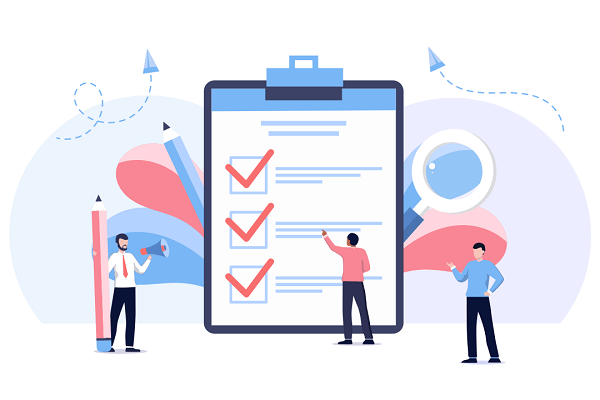Step-by-Step Process For Evaluating And Selecting The Right ERP

In today’s competitive business landscape, an Enterprise Resource Planning (ERP) system plays a crucial role in streamlining processes, improving efficiency, and enhancing overall business performance. However, selecting the right ERP solution can be challenging, thanks to the myriad of options available in the market. The following is a step-by-step process to evaluate and select the most suitable ERP system for any organization.
Define Business Objectives and Requirements
First, you must understand the functions of an ERP. Next, you must clearly define the organization’s business objectives and requirements. This involves assessing current challenges, identifying areas for improvement, and setting goals that the ERP should help achieve. Engage key stakeholders from various departments to gather input and understand their specific needs.
Conduct a Gap Analysis
Once the business objectives and requirements are established, conduct a gap analysis to identify the gaps between the current system and desired future state. This analysis helps highlight the functionalities and features needed in an ERP system to bridge those gaps effectively. Consider factors like scalability, integration capabilities, reporting capabilities, and industry-specific requirements during this analysis.
Research and Shortlist ERP Vendors
Next, research the ERP market to identify potential vendors that offer solutions aligned with the organization’s requirements. Consider factors such as vendor reputation, industry expertise, product stability, customer reviews, and scalability. Shortlist a few ERP vendors that seem to meet the company’s needs and conduct further evaluation.
Request for Proposal (RFP)
Develop a detailed Request for Proposal (RFP) document to send to the shortlisted ERP vendors. The RFP should include a comprehensive list of the organization’s requirements, timelines, budget, and implementation expectations. This document will serve as a basis for vendors to provide proposals, ensuring the company receives relevant information from each vendor.
Evaluate Vendor Proposals
Evaluate the vendor proposals received based on predefined criteria such as functionality, cost, implementation timeline, support services, and system scalability. Consider organizing product demos or proof-of-concept sessions with the shortlisted vendors to assess the usability and suitability of their ERP systems. This will allow those responsible for choosing the program to gain hands-on experience and determine which solution best aligns with the organization’s requirements.
Conduct Reference Checks
Contact the vendor’s references provided in their proposals and gather feedback on their experiences with the ERP system and vendor. Ask about the implementation process, post-implementation support, system performance, and overall satisfaction. Reference checks help validate vendor claims and provide insights into potential challenges the company may face during the implementation phase.
Vendor Selection
Based on the evaluation of proposals and reference checks, select the vendor that best meets the organization’s requirements. Consider factors such as functionality, vendor stability, implementation expertise, ongoing support, and total cost of ownership. Ensure that the selected vendor has a proven track record and aligns well with the organization’s culture and long-term vision.
Contract Negotiation and Agreement
Once the vendor is selected, negotiate the contract terms and conditions. Pay close attention to the pricing structure, licensing agreements, implementation timeline, support services, and any additional costs involved. Engage legal and procurement teams to ensure the contract protects the organization’s interests and includes adequate provisions for future system enhancements or upgrades.
Plan Implementation and Training
Create a detailed implementation plan that outlines key milestones, roles and responsibilities, and a timeline for the ERP implementation. Allocate resources and establish a dedicated project team to oversee the implementation process. Develop a comprehensive training program to ensure that end-users are well-equipped to maximize the benefits of the new ERP system.
Go Live and Continuous Improvement
Execute the implementation plan, closely monitor the progress, and make necessary adjustments along the way. Conduct thorough testing before the go-live date to minimize disruptions. Once the ERP system is operational, gather feedback from end-users and stakeholders to identify areas for improvement. Continuously monitor system performance, analyze data, and leverage ERP analytics to drive ongoing process optimization.
Selecting the right ERP system is a critical decision that can significantly impact an organization’s efficiency and competitiveness. By following a structured step-by-step process, organizations can ensure they evaluate and select an ERP system that aligns with their specific needs. Doing so paves the way for long-term success.
